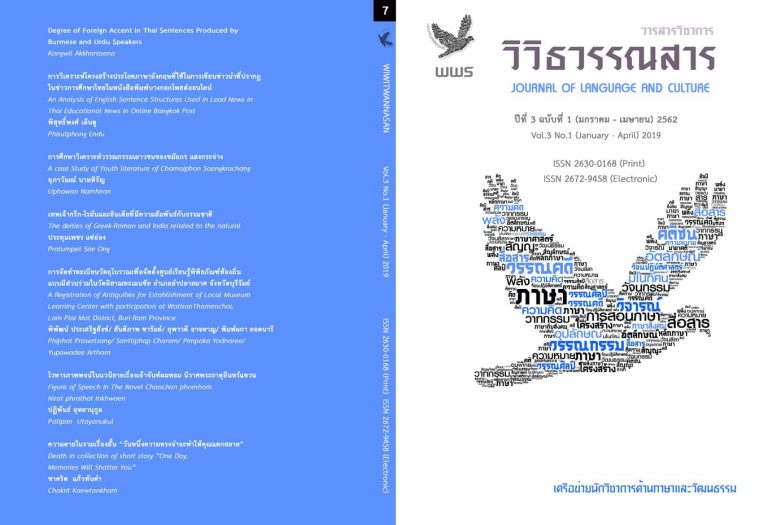An Analysis of English Sentence Structures Used in Lead News in Thai Educational News in Online Bangkok Post
Main Article Content
Abstract
The objectives of this study were to study and analyze English sentence structures and find out the frequencies of kinds of English sentences consisted of simple sentence, compound sentence, complex sentence, and compound complex sentence used in lead news in Thai educational news in online Bangkok Post during 1st August 2017- 31st August 2018. The samples used for this study were 202 pieces of lead news in Thai educational news in online Bangkok Post classified into 214 sentences. The instruments for this study consisted of pattern structures of simple sentence, compound sentence, complex sentence, and compound-complex sentence based on the theories and concepts given by the English Writing Contextual Book Unit 1-5 of Sukhothai Thammathirat Open University (2004:109) and Samran Khamying (2009: 409-435). The research statistics for data analysis was per-centage. The result of the study found that the most used English sentence structures in lead news in Thai educational news in online Bangkok Post were complex sentences, 151 sentences (70.56 %), followed by simple sentences, 45 sentences (23.36%), compound sentences, 11 sentences (5.14%), and compound-complex sentence, 7 sentences (3.27%), respectively.
Article Details
Copyright is that of the journal any reproduction must be permitted by the editor of journal
References
Kasetsart University Press.
Chanachai, P. (2015). The Study of Syntactic Ellipsis and the Usage of
Forms of Political News Headlines in the Bangkok Post. Master
Thesis of Arts in English for Communication, Faculty of Humanities
and Social Sciences, Burapha University.
Endu, P. (2017). Kansueksa priapthiap nuaisiang Phayanchana phasa Thai
lae phasa Angkrit. (in Thai) [A Comparative Study of Thai and English
Consonants’ Phonemes]. Wiwitwanasan. 1(1): 39-6.
Iamsuppanimit, S. (1987). Khrongsang khong prayok nai nangsuephim
phasa Angrit. (in Thai) [Sentence Structures in English Newspapers].
Nakon Pathom: English Department, Faculty of Arts, Silpakorn
University.

